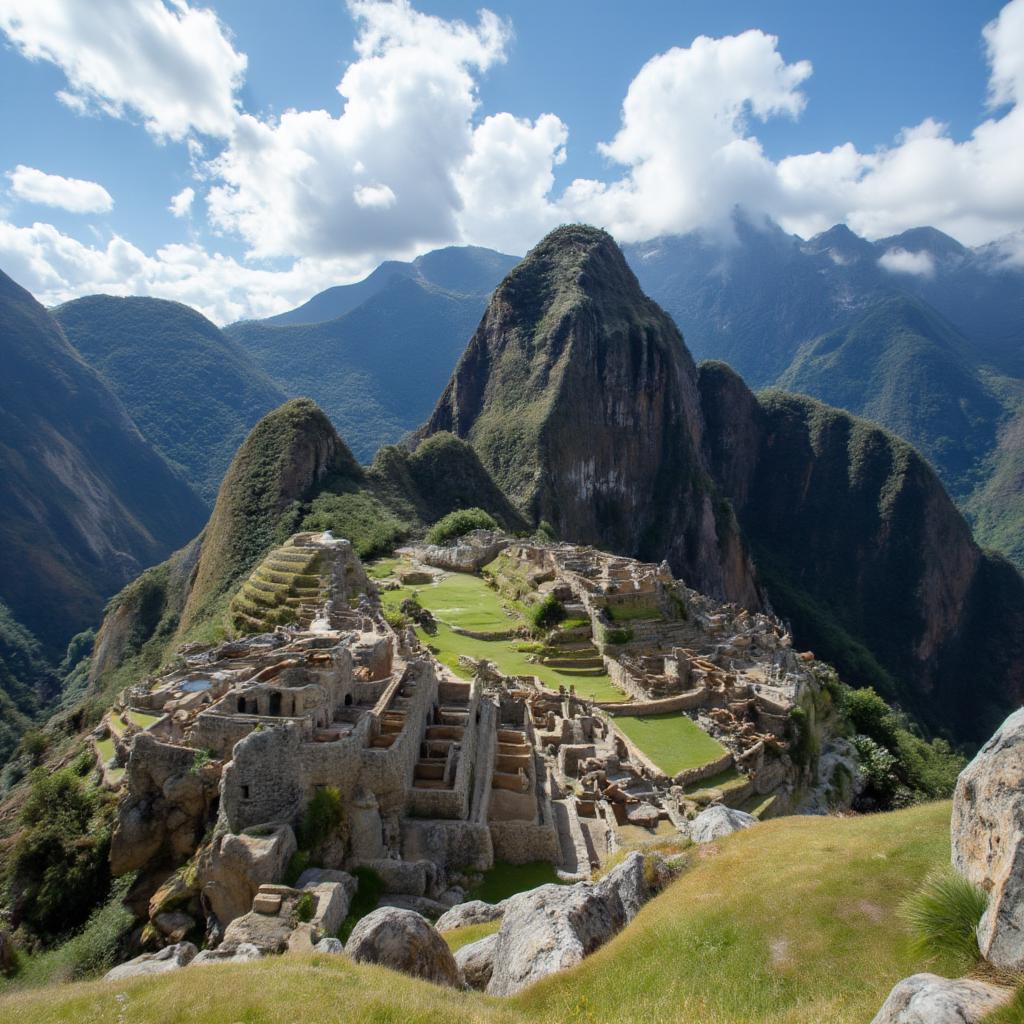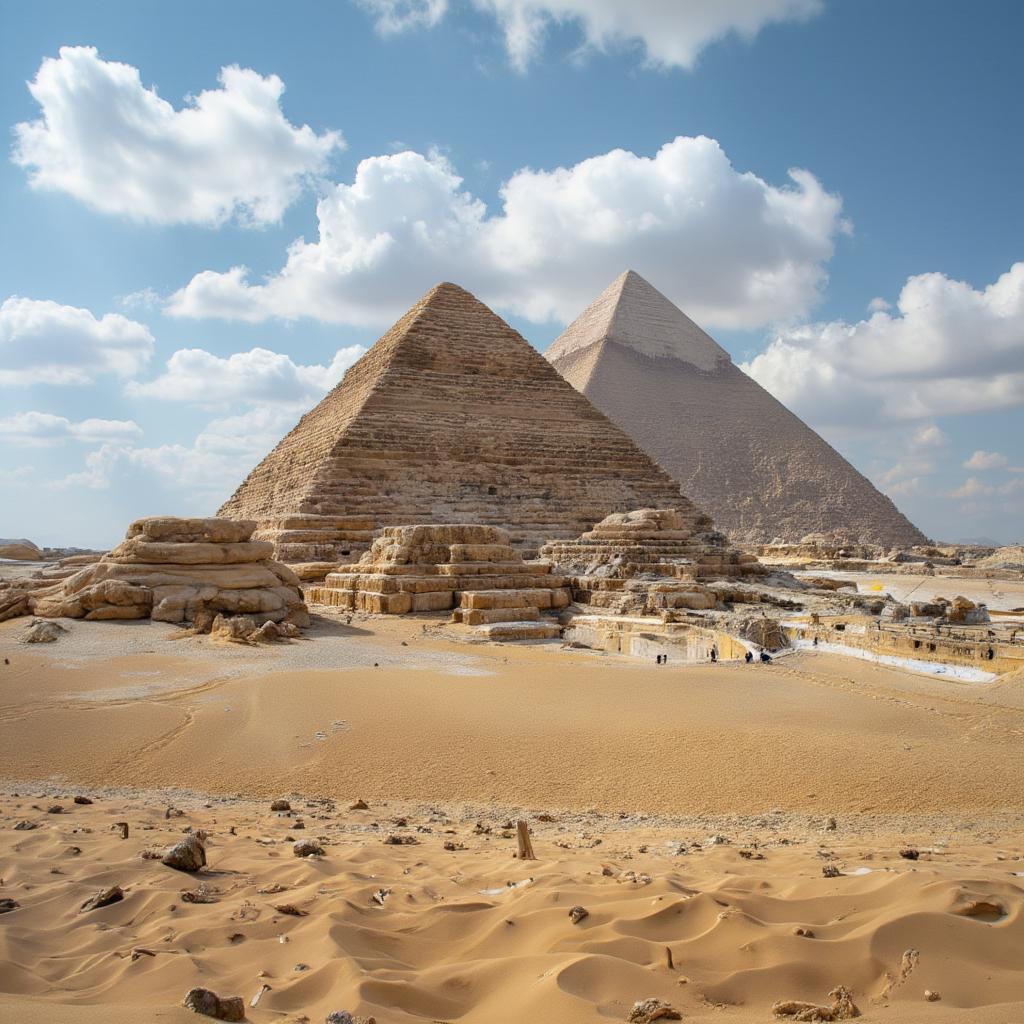Unveiling the Seven Wonders of the Ancient World: Facts and Stories
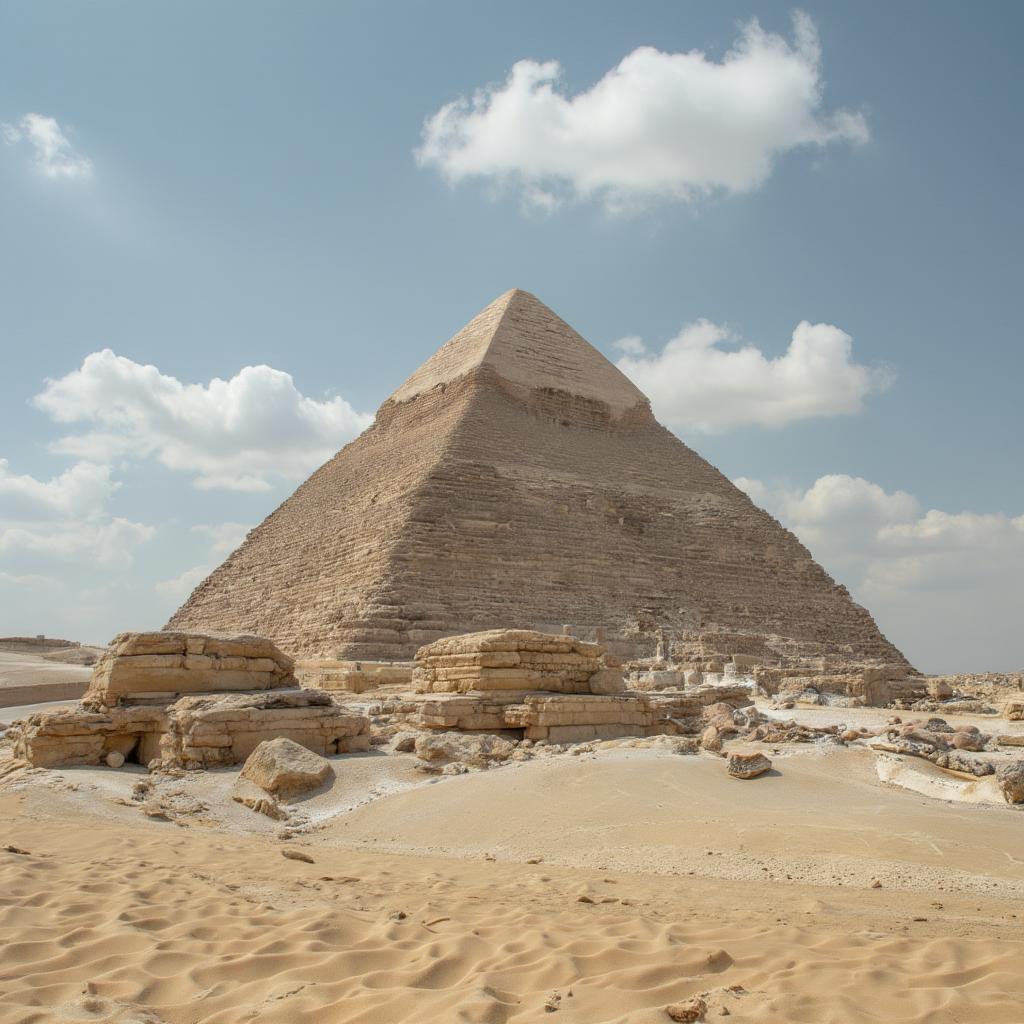
The Seven Wonders of the Ancient World, a list compiled by ancient Greek historians, represent some of the most incredible feats of engineering and artistry from antiquity. These structures, built across diverse locations and cultures, continue to fascinate and inspire awe today. Let’s delve into these marvels, exploring their origins, construction, and the enduring legacy they left behind.
What Were the Original Seven Wonders of the Ancient World?
The original list of Seven Wonders included the Great Pyramid of Giza, the Hanging Gardens of Babylon, the Statue of Zeus at Olympia, the Temple of Artemis at Ephesus, the Mausoleum at Halicarnassus, the Colossus of Rhodes, and the Lighthouse of Alexandria. These were not simply large structures; they were symbols of power, faith, and human ingenuity. Each wonder was a testament to the advanced knowledge and craftsmanship of its time. To further appreciate the grandeur of these sites, you can explore a fascinating journey through the past in a 7 wonders of the world documentary.
The Great Pyramid of Giza: A Timeless Marvel
How Was the Great Pyramid of Giza Built?
The Great Pyramid, the oldest and only remaining wonder of the ancient world, is an incredible feat of engineering. Built as a tomb for Pharaoh Khufu of the Fourth Dynasty, it’s comprised of an estimated 2.3 million limestone blocks, some weighing up to 80 tons each. The blocks were quarried, transported, and precisely placed using ramps, levers, and ropes. The sheer scale and precision of its construction are mind-boggling even by today’s standards. The construction was a monumental task requiring thousands of skilled workers and the logistical support of a vast, organized society.
The Great Pyramid’s Significance and Legacy
The Great Pyramid isn’t just about size; it’s about purpose. It demonstrates the pharaoh’s power and the advanced mathematics and engineering skills of the ancient Egyptians. The pyramid’s alignment with the cardinal directions and its internal passages suggest a deep understanding of astronomy and geometry. Its enduring presence has made it a symbol of ancient Egyptian civilization, capturing the imagination of generations.

The Hanging Gardens of Babylon: A Mythical Oasis
Were the Hanging Gardens of Babylon Real?
The Hanging Gardens of Babylon are perhaps the most enigmatic wonder, largely due to the lack of concrete archaeological evidence. Described in ancient texts as an artificial mountain of lush greenery, it was supposedly constructed by King Nebuchadnezzar II for his wife, Queen Amytis. The idea of a multi-tiered garden cascading with water and diverse plant life is captivating, but its precise location and even its existence are debated among scholars.
What is the Story Behind the Hanging Gardens?
The tale of the Hanging Gardens is as romantic as it is improbable. It is said that Nebuchadnezzar built the gardens to remind Amytis of her verdant homeland of Media. The descriptions depict an engineering marvel with an advanced irrigation system, likely involving a complex series of pumps, pipes, and reservoirs. Regardless of its reality, the concept of such an elaborate garden has captivated generations.
“The Hanging Gardens, whether a historical fact or a magnificent legend, represent the ambition of ancient civilizations to conquer nature and create artificial paradises. It reflects a desire to control the environment, which is a recurring theme in human history,” says Dr. Eleanor Vance, a renowned expert in ancient Mesopotamian architecture.
The Statue of Zeus at Olympia: A Divine Masterpiece
How Was the Statue of Zeus Constructed?
The Statue of Zeus at Olympia was a colossal sculpture of the king of the gods, crafted by the renowned Greek sculptor Phidias around 435 BC. This massive statue was made of ivory plates and gold panels over a wooden framework. The detailed drapery, the intricate throne, and the sheer scale of the artwork must have been awe-inspiring to behold. It represented not just Zeus, but the pinnacle of Greek artistry and religious expression.
What Was the Significance of the Statue?
The statue stood within the Temple of Zeus and was a central feature of the Olympic Games held in Olympia. It was a physical manifestation of Zeus’s power and authority, and it attracted people from all over the Greek world who came to worship the god and participate in the games. The statue’s influence extended beyond the religious, inspiring countless works of art and becoming a symbol of ancient Greek culture. If you’re interested in the artistic and historical context, you might consider further reading in a seven wonders of the ancient world book series.
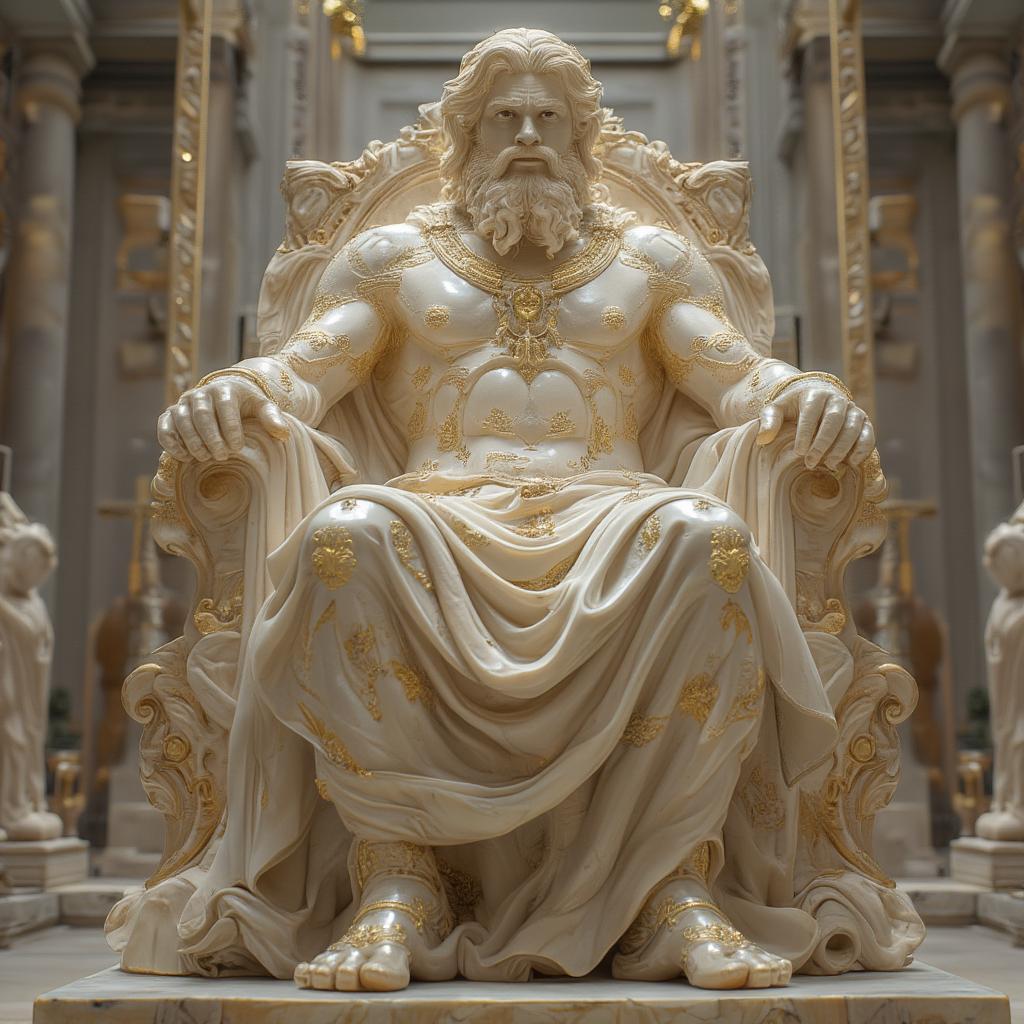
The Temple of Artemis at Ephesus: A Sanctuary of Opulence
What Made the Temple of Artemis Unique?
The Temple of Artemis at Ephesus was a magnificent sanctuary dedicated to the Greek goddess of the hunt and wilderness, Artemis. It was renowned for its immense size, elaborate decoration, and the artistry involved in its construction. Constructed of marble, the temple was rebuilt several times, each iteration more impressive than the last. The temple’s immense scale and architectural brilliance were legendary. You can explore additional facts about the temple of artemis to deepen your understanding.
Why Was the Temple a Wonder of the Ancient World?
The Temple of Artemis was more than just a place of worship; it was a hub for the surrounding community, a place of business, and a storehouse of treasures. Its destruction by arson and subsequent re-emergence made it a symbol of resilience and the enduring human spirit. The temple’s columns, its elaborate façade, and its vibrant atmosphere are legendary, drawing people from across the ancient world. The temple is a great subject to view from a temple of artemis at ephesus perspective to fully understand its glory.
The Mausoleum at Halicarnassus: A Tomb Fit for a King
Who was Mausolus and Why Did He Need Such a Grand Tomb?
The Mausoleum at Halicarnassus was an extravagant tomb built for Mausolus, a satrap in the Persian Empire. The tomb’s grand scale and opulent design were unlike any other burial site, earning it a spot among the wonders of the ancient world. The word “mausoleum” derives from his name, a testament to the structure’s lasting impact.
How Did the Mausoleum Influence Architecture?
The Mausoleum was more than just a tomb, it was a work of art, showcasing the finest architectural and artistic skills of its time. Its design, a blend of Greek, Egyptian, and Lycian influences, featured elaborate sculptures, columns, and decorative elements. The sheer scale of the structure, a towering masterpiece, left such an impact that it has become a symbol for grand tombs throughout history, and the name has become commonplace today.
“The Mausoleum’s legacy lies not just in its grandeur but in its fusion of different architectural traditions, reflecting the cosmopolitan nature of the ancient Mediterranean world. It is a true masterpiece of cultural exchange,” explains Prof. Alistair Finch, a leading historian in ancient architectural styles.
The Colossus of Rhodes: A Monumental Sun God
How Was the Colossus of Rhodes Built?
The Colossus of Rhodes was a gigantic bronze statue of the sun god Helios, erected on the island of Rhodes in the 3rd century BC. It was built to celebrate Rhodes’ victory after a long siege. This engineering marvel was about 108 feet (33 meters) tall and was a symbol of the island’s power and prosperity. It was considered an incredible feat of engineering for its time.
What Happened to the Colossus of Rhodes?
The Colossus of Rhodes stood for only about 56 years before it was toppled by an earthquake. Despite its relatively short lifespan, the Colossus left a lasting impression, symbolizing the ambition and artistry of the ancient world. The remnants of the shattered statue were a tourist attraction for centuries, even in its damaged state. Its scale and grandeur inspired awe and wonder among those who viewed it.

The Lighthouse of Alexandria: A Beacon of Guidance
Why Was the Lighthouse of Alexandria Necessary?
The Lighthouse of Alexandria was built on the island of Pharos during the Hellenistic period to guide ships into the bustling harbor of Alexandria. The structure was a marvel of engineering, with a fire burning atop a tower to illuminate the sea. Its sophisticated mirror system allowed the light to project long distances, providing essential navigational aid.
What Happened to the Lighthouse?
The Lighthouse stood for centuries, one of the tallest man-made structures in the ancient world, until it was damaged by several earthquakes. Its influence can still be seen in modern lighthouse designs and its legacy endures as a symbol of innovation and navigation. The lighthouse served as a beacon for knowledge, with scholars and travelers from all over the ancient world passing through its shadow.
“The Lighthouse of Alexandria was not just a navigational aid; it was a symbol of Alexandria’s intellectual and commercial prominence. Its sophisticated design reflected the advanced knowledge of ancient Greek science and engineering.” – Dr. Sophie Dubois, expert on Hellenistic civilization.
The Enduring Legacy of the Seven Wonders
These Seven Wonders of the Ancient World are more than just historical relics. They’re reminders of the ambition, ingenuity, and creativity of past civilizations. They continue to inspire us today with their grandeur, beauty, and complex history. Whether you explore the remaining wonders or learn about the lost ones, the stories of these magnificent structures will always captivate. The seven wonders continue to fuel our imagination, and can even be used to create an interesting 7 wonders of the world printable for a fun educational approach. Understanding these ancient wonders helps us appreciate the rich tapestry of human achievement. These architectural marvels underscore the power of human imagination and innovation across civilizations. They are a testament to the enduring human desire to build, create, and leave behind a lasting legacy.
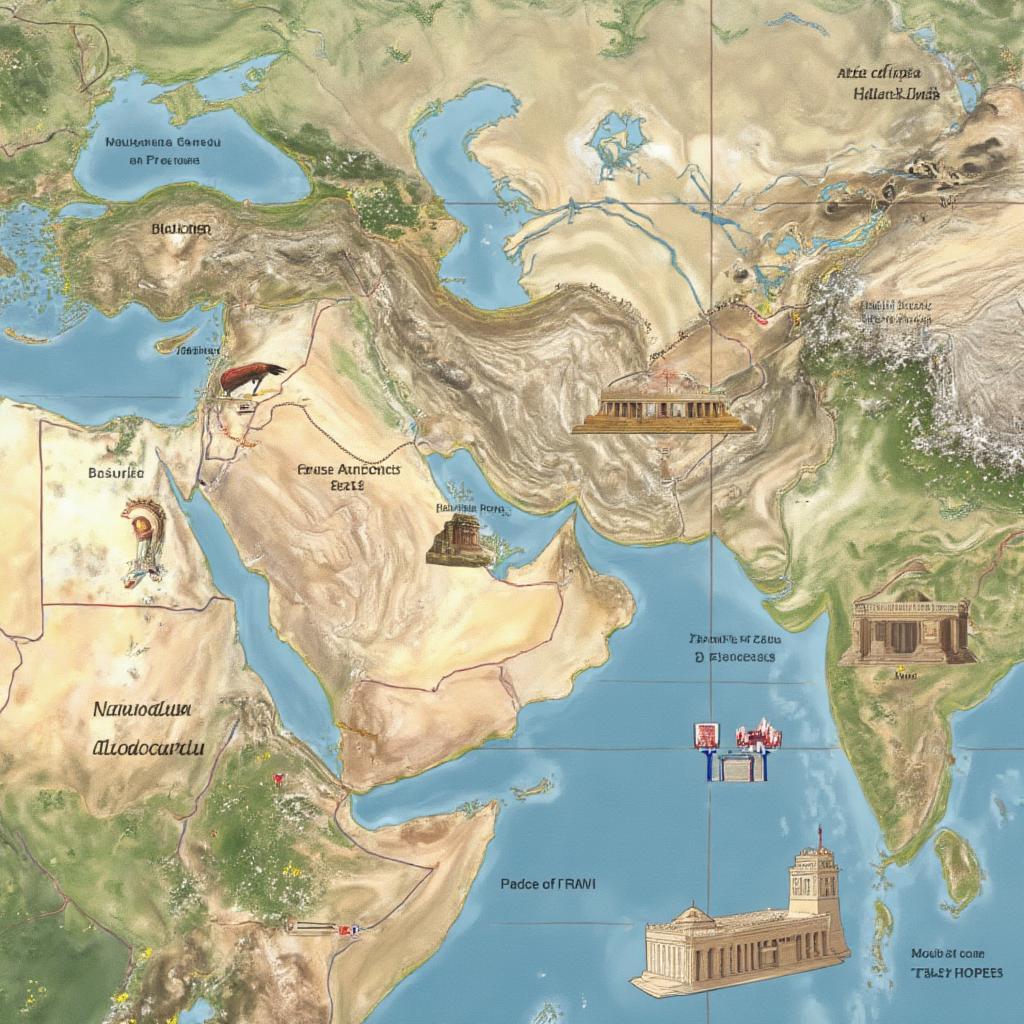
These “Seven Wonders Of The Ancient World Facts” remain deeply relevant to anyone fascinated by history, architecture, and the power of human achievement. These structures continue to beckon us to explore the depths of history and celebrate the enduring spirit of innovation.


